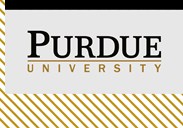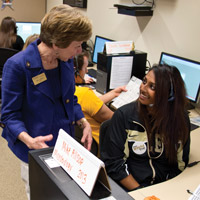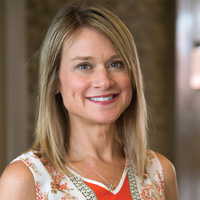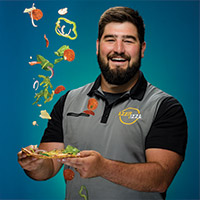Living and learning in the Navajo Nation
The Kayenta Health Center also demonstrates how health care workers within the public health care system collaborate. Since all health care services are located on the health compound, there is greater opportunity for interaction. Aaltonen says this is something she talks about in class, but students get to experience the network of care at Kayenta.
The Navajo Nation is a blend of the traditional and modern. As such, students have the opportunity to talk with traditional healers and learn how Western medicine is blended with traditional approaches. They interact with patients in clinic settings and the emergency department.
Beyond the clinic's walls, students team with the environmental health department on community projects. Past efforts have included examining water lines and septic systems, conducting child seat belt checks, and even providing rabies vaccines for area dogs. In May 2013, students were on a team that conducted community walks to promote physical activity. They also had received a service-learning grant to assemble and distribute first aid kits at an elder fair held annually.
Adrienne Hubert, BS '09, had the unique opportunity to dance with a World War II code talker, Samuel Holiday, at the elder fair she attended. Nursing students learned that approximately 400 Navajo served in the Marines using the Navajo language to send secure information — a code that was never broken by the Japanese.
Hubert earned bachelor's degrees from Purdue in athletic training in 2008 and nursing in 2009. She currently works on the post-anesthesia care unit (PACU) at Georgetown University Medical Center in Washington, D.C., but will soon move to the PACU at Johns Hopkins Hospital in Baltimore.
Diné Bikéyah
Before their visit, students learn about the Navajo culture, what they can expect to see and experience, and in turn, what is expected of them. Diné Bikéyah or Navajoland is home to Diné (translation "the people") who believe in harmony among all living things. Students learn that the vision for the Kayenta Service Unit is "hozhooga naasha," which means to walk in beauty.
"It's something the students hear about before we go to Arizona but something they understand after we've been there," Aaltonen says.
She explains that hozhoogo naasha relates to how we demonstrate respect and are responsive to others, how all persons and animals have a place in the world. The concept of "hózhó" is the essence of the traditional Navajo way of life and represents the idea of living in balance and harmony with nature and other people.
"It was fascinating to speak with the Navajo elders about their lives and the history of the people," recalls Audrey Lucterhand, a 2013 Purdue nursing graduate who now lives in Glacier, Wash. "Nurses often work in facilities that have very diverse patient populations and they must be sensitive to the beliefs and practices of all their patients."
Alumna Sarah Kleine agrees that the Kayenta experience helped prepare her for a nursing career. She earned a bachelor's degree in dietetics from Purdue in 2012 and then a bachelor's in nursing in 2013. Kleine now works on a post-surgical unit at Memorial Hospital in South Bend, Ind.
"It taught me to be comfortable in a cultural environment different from what I am accustomed to," she says. "I also learned the importance of slowing down and taking your time to build rapport and trust with each patient."
Aaltonen says perhaps the greatest gift they all received in Kayenta was time.
"This population is less focused on time than we typically are, and we're away from the more frenetic pace of our lives in Indiana," she explains. "That gives us more time to consider life and the students time to contemplate what is important in delivering health care, in being the nurse they want to be — what 'hózhó' means to each one of us."











